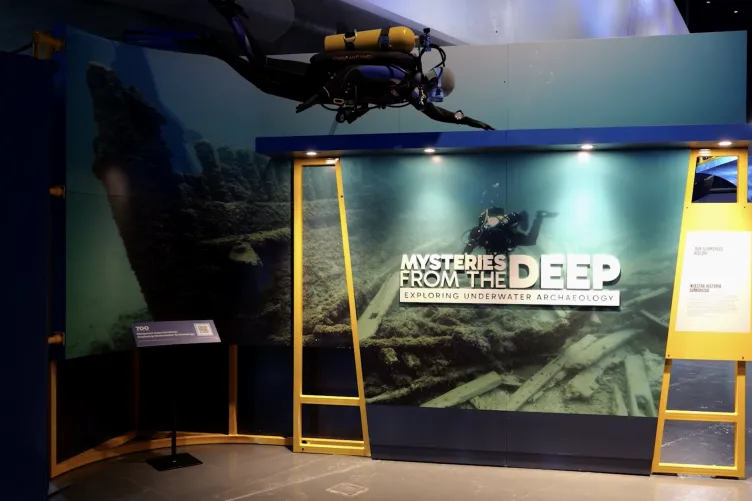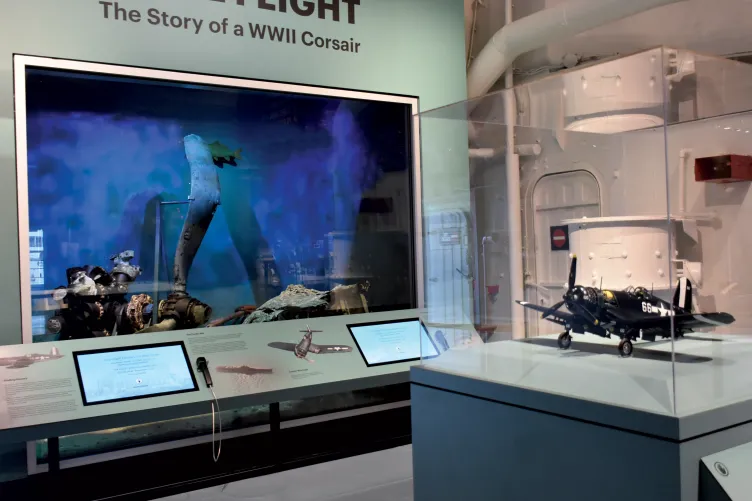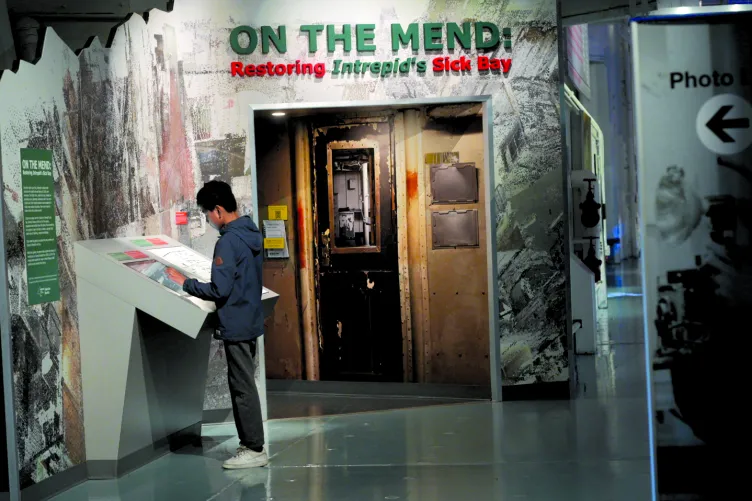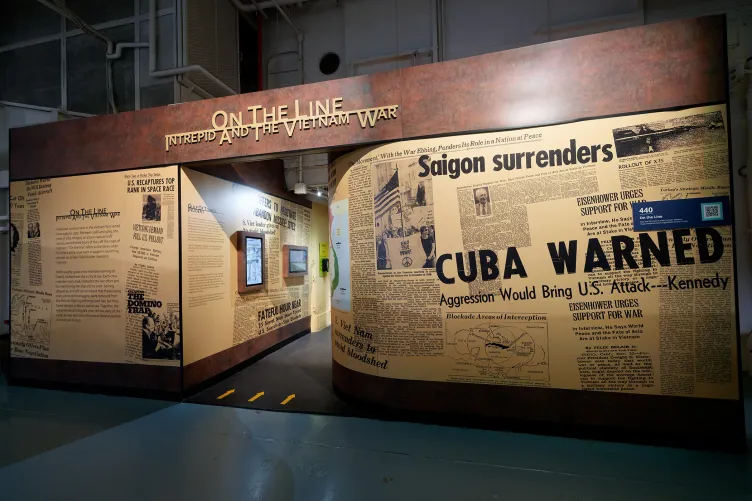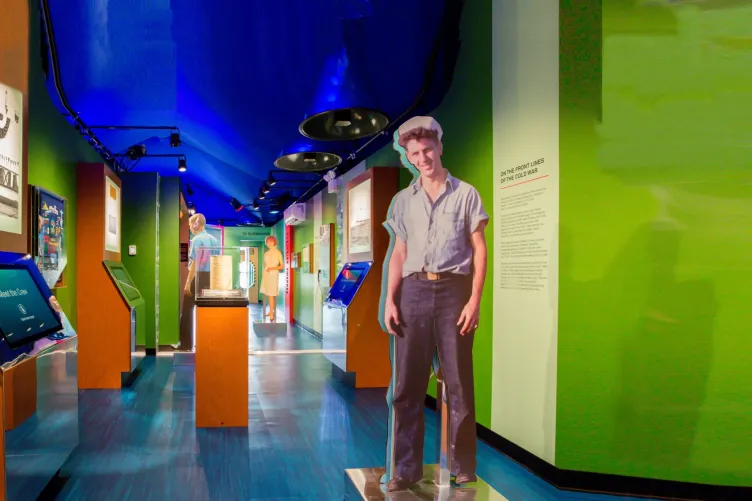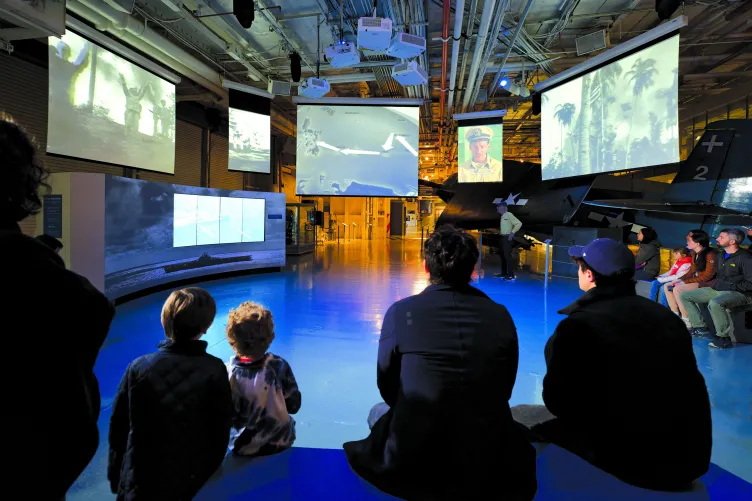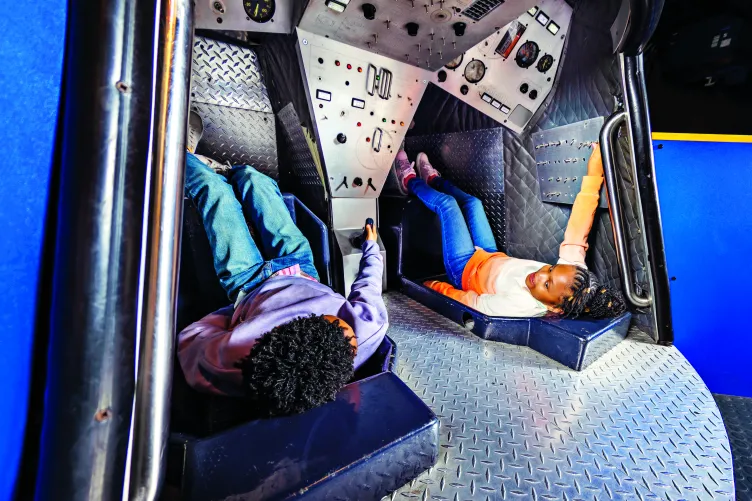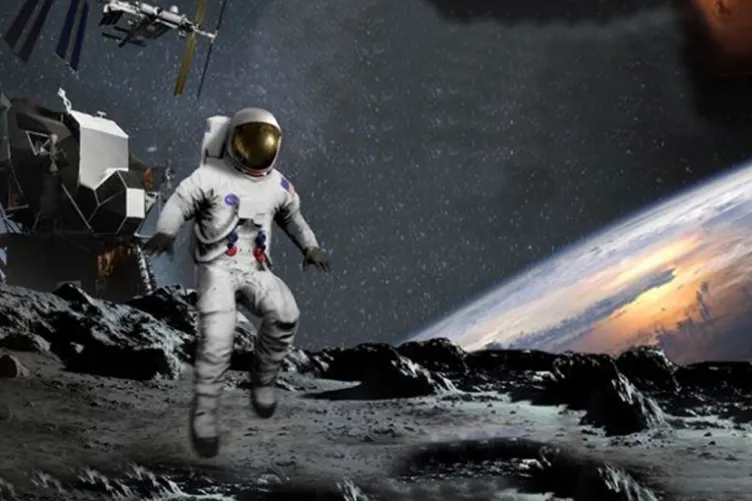
Past Exhibitions
Explore past exhibitions and get a closer look at the historic ground we’ve covered at the Museum.
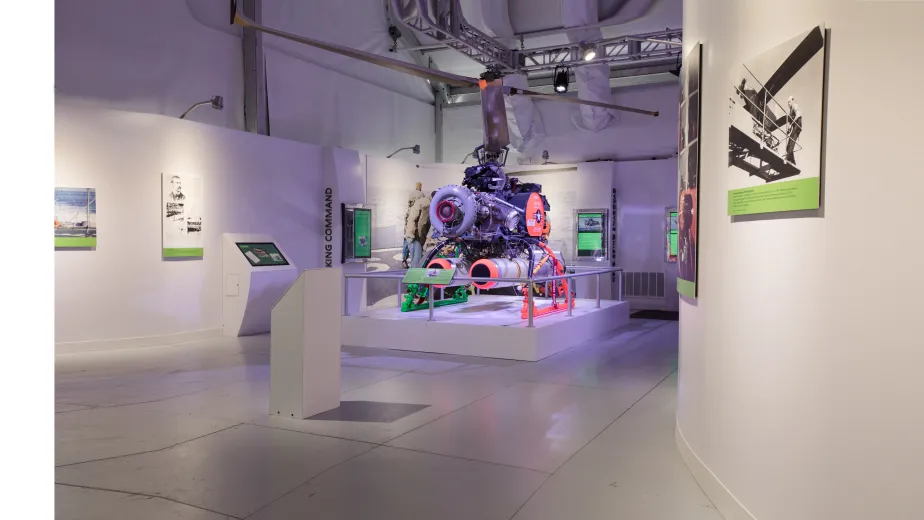
Our past exhibitions shed light on the people, places and innovation that led to some of the most incredible moments in history.
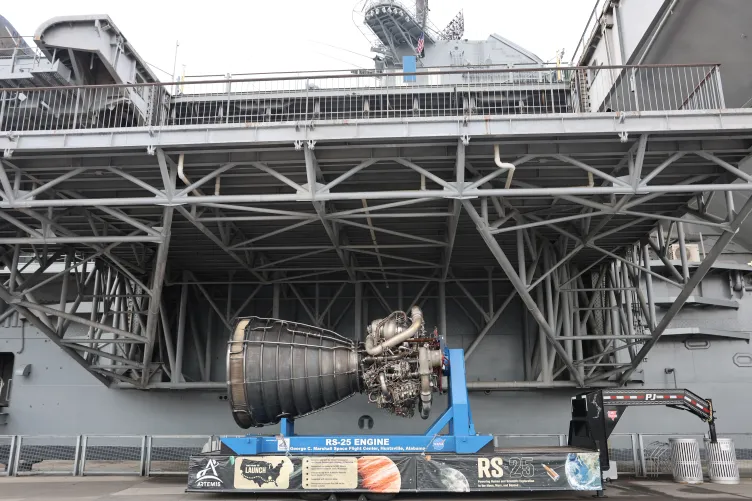
As part of the Intrepid Museum's exhibition "Apollo: When We Went to the Moon," a full-scale replica of the RS-25 Engine was displayed on Pier 86 from July 21 to September 2, 2024, giving visitors a chance to explore this iconic piece of space technology up close.
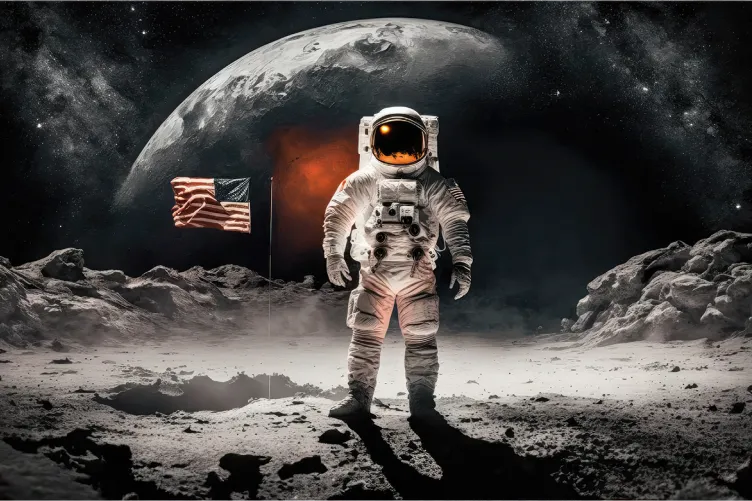
Presented in the Space Shuttle Pavilion, the exhibition featured interactive media, photographs, and rare artifacts. It explored the people, technology, and global events that defined the Space Race, highlighting the intense U.S.-Soviet competition and the sacrifices made to be the first on the Moon.

With content originally created by the International Women’s Air & Space Museum in Cleveland, Ohio, this bilingual exhibit spotlighted the women astronauts who have made critical contributions to human space flight.
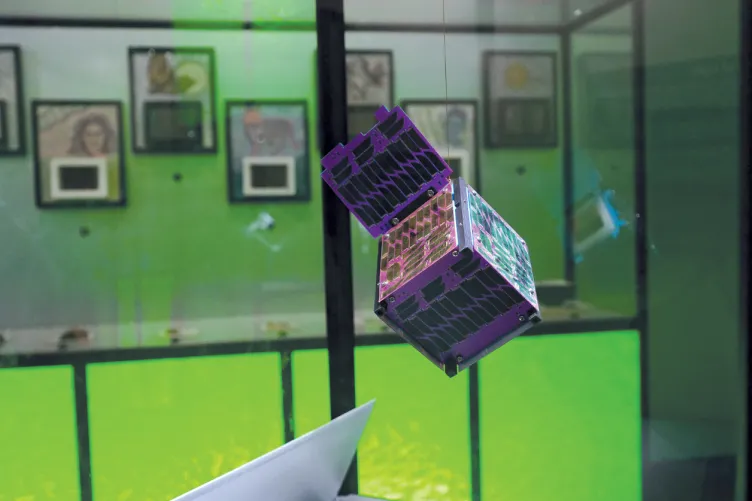
This new temporary exhibit showcased an inspiring collaboration between science and art as a means to reach other star systems at speeds never thought to be achievable.
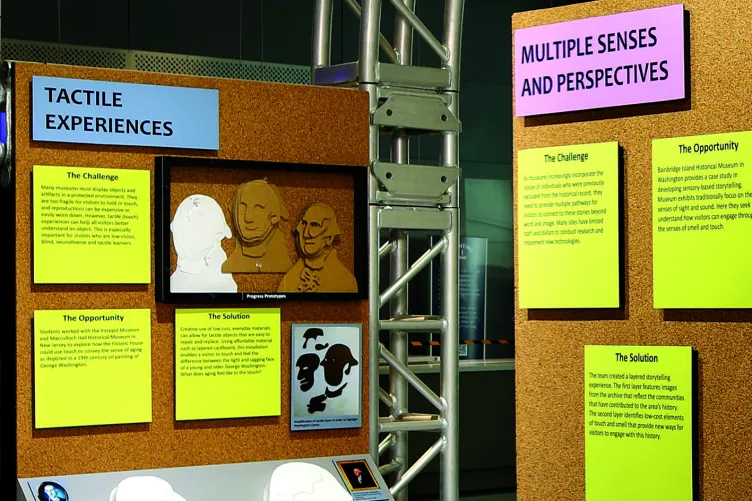
This temporary exhibit invited visitors to test and evaluate a series of digital and physical experiences aimed at making exhibits at historic sites and house museums more accessible and inclusive.
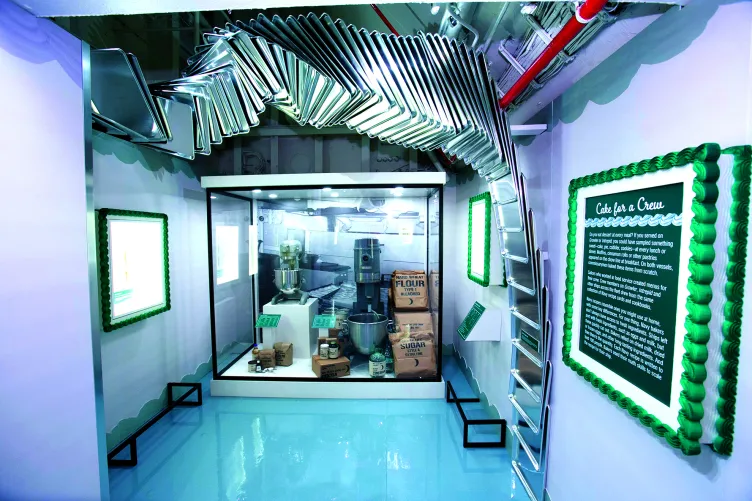
Navy Cakes: A Slice of History showcased these epic sweets and the hard work of the sailors who created them. Visitors could explore recipes, photos, artifacts and oral histories telling the story of the elaborate confections baked onboard Intrepid and Growler.
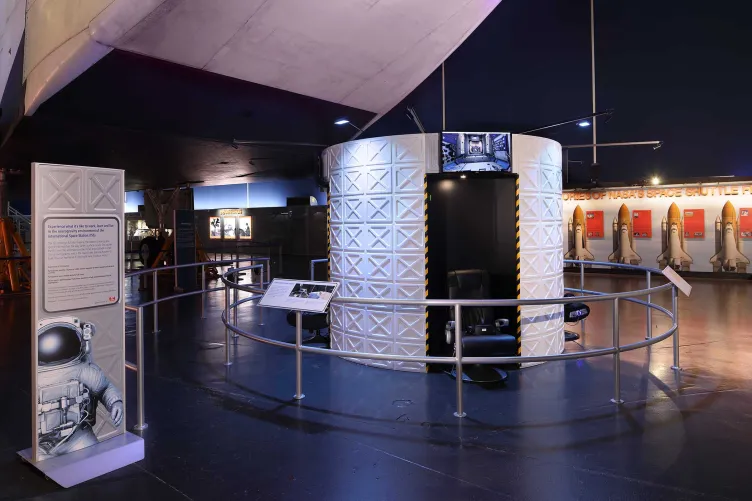
This virtual reality trip took visitors out of this world to the International Space Station, experiencing what it was like to work, learn and live in the microgravity environment.
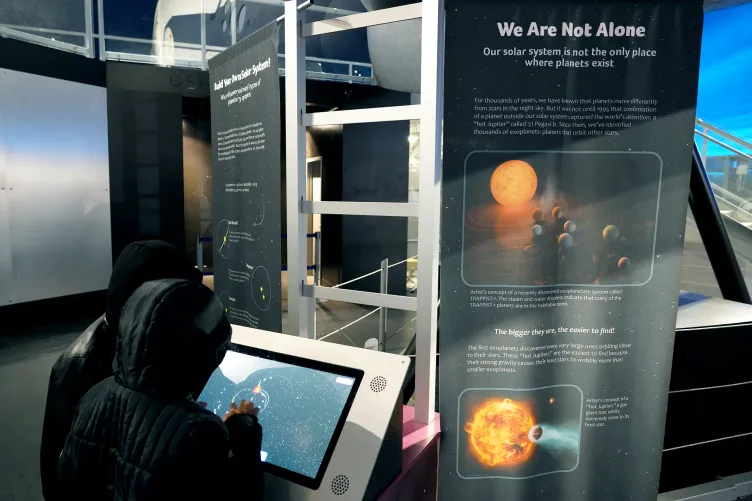
Through multimedia activities visitors could build their own solar systems, see the most recent NASA discoveries and learn whether popular TV shows and movies featured facts or fiction.
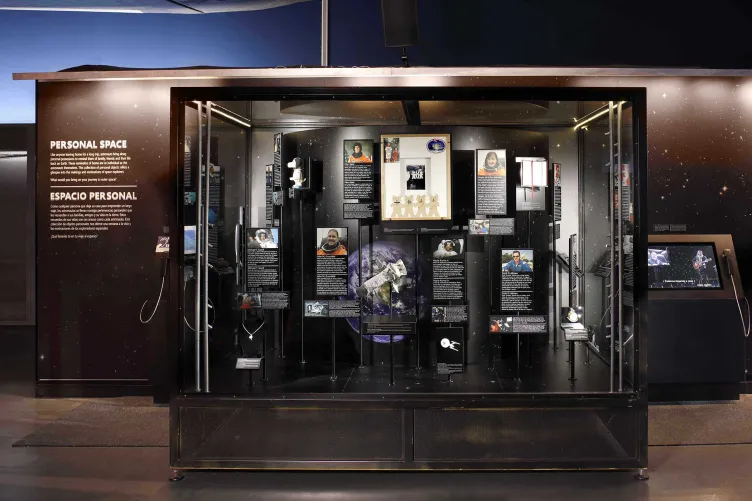
A glimpse into the lives of 11 astronauts through special objects they brought with them on missions: you could listen to Charles Bolden's favorite tunes, see Nicole Stott’s watercolor waves and see Mike Massimino’s Snoopy among other things.

The stories of previously unsung women in the U.S. space program were brought to life through Microsoft HoloLens and hosted by a holographic, Dr. Mae Jemison.
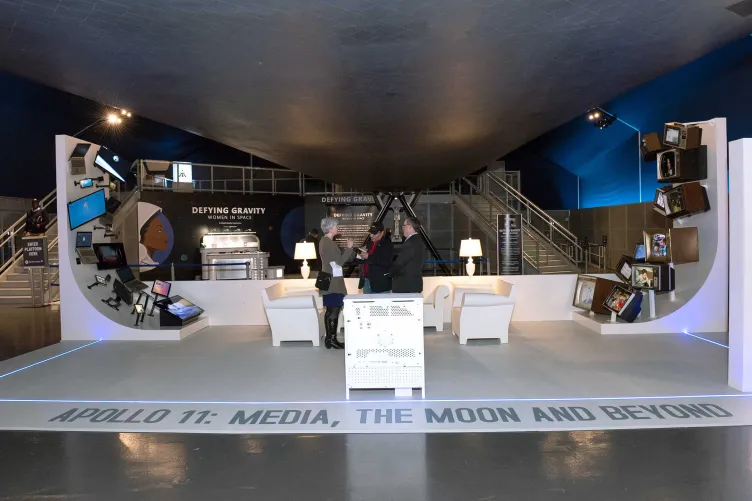
On July 20, 1969, the world paused to watch American astronauts walk on the moon. To mark the 50th anniversary of this achievement, the Museum invited the public to experience an imaginative installation of archived news media, displayed through vintage televisions. The installation also bridged the decades to the dreams of tomorrow, and the next great achievements of the 21st century.

Intrepid's missions took the ship and crew to cities around the globe's Cannes and Copenhagen, Halifax and Hong Kong, Singapore and Sydney.
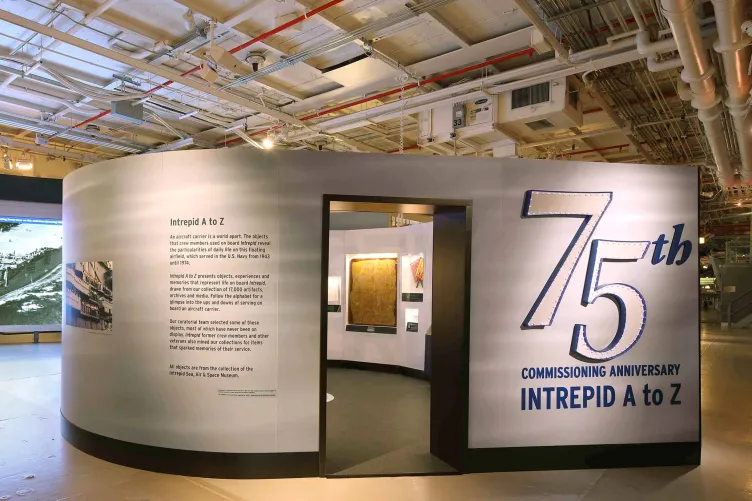
In August 2018, the Intrepid Museum celebrated the 75th commissioning anniversary of the aircraft carrier Intrepid. To mark the occasion, Intrepid A-Z explored the experience of life on Intrepid through the Museum's rich collections of artifacts, archives and media never before seen by the public.
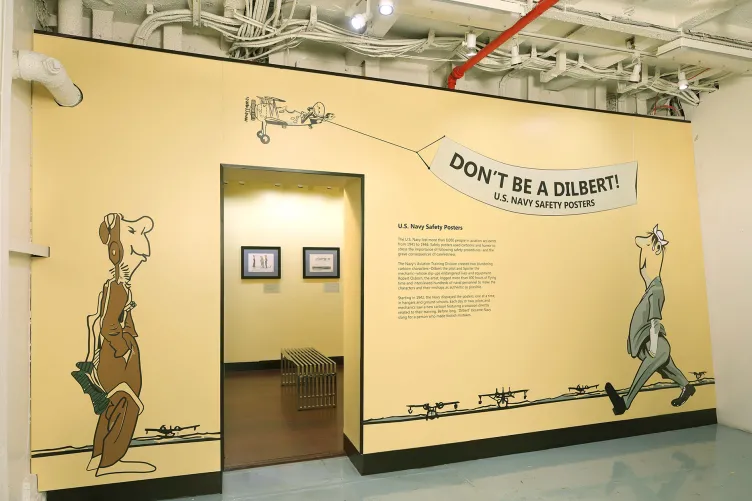
Don’t Be a Dilbert! U.S. Navy Safety Posters featured examples of World War II safety posters from the Intrepid Museum’s collection. The posters, illustrated by noted cartoonist Robert Osborn, featured two blundering cartoon characters—Dilbert the pilot and Spoiler the mechanic—whose slip-ups endangered lives and equipment. The exhibition also included excerpts from a Navy training film in which Dilbert comes to life. In the film, his stubborn inability to follow safety procedures has devastating consequences.
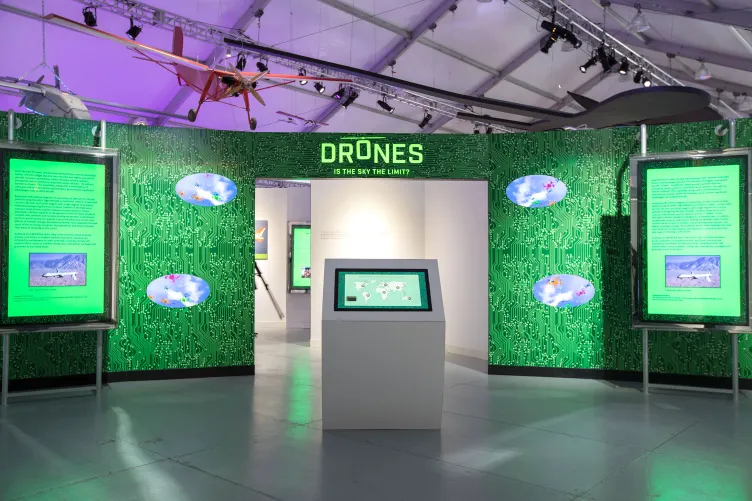
Visitors learned about the history of drone technology, from the earliest unmanned flying machines to advanced systems of the 21st century. A variety of drones, historical artifacts, model airplanes and rare videos were on display. An “immersion” theater allowed visitors to experience dramatic images captured by the unique cinematographic perspective of the drone.

HUBBLE@25 commemorated the anniversary of the launch of the Hubble Space Telescope on board the space shuttle Discovery in 1990. Through a rich blend of photographs, Hubble-produced images, original artifacts and inspiring immersive environments, the HUBBLE@25 exhibition introduced the public to the history of the telescope and the unparalleled scientific achievements generated by the Hubble project.
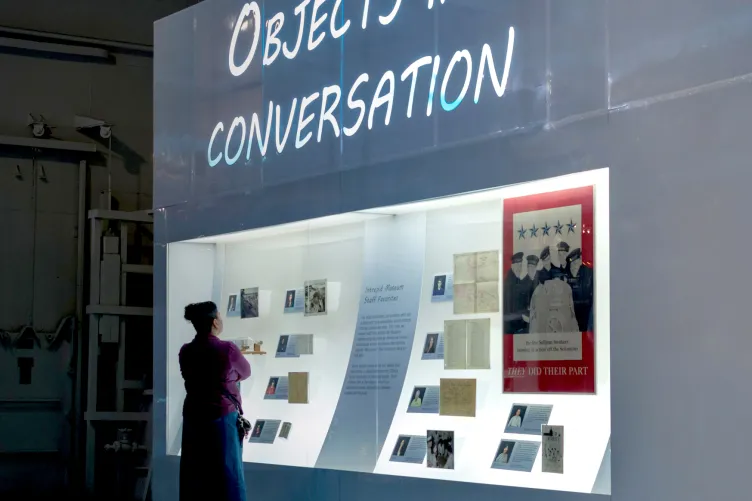
During the U.S. Navy service, Intrepid was home to more than 3,000 men at a time. Today, the Intrepid Museum houses a collection of more than 9,000 historic objects, archives, photographs and film. Like each sailor, every artifact has a unique story. And each object becomes more valuable and meaningful as part of our collections as a whole, just as the ship's crew drew its collective strength from the contributions of each individual.
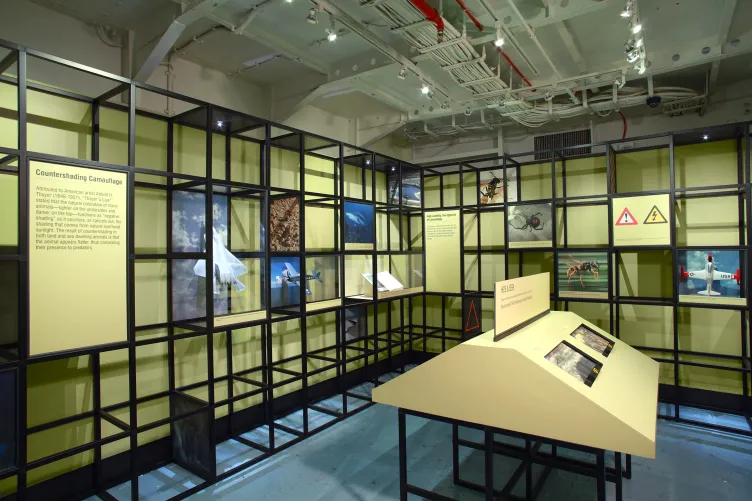
Why is a squirrel gray? Why do some bugs look like sticks? The answer to these questions is, camouflage. For many animals, being able to hide in plain sight or look like something entirely different is a necessity of survival. Learning from the animal world, humans have employed camouflage in hunting and warfare.

Operating the aircraft carrier Intrepid required the skills of 3,000 men, many of whom worked below decks—far from the excitement of the Flight Deck. In this pop-up exhibit, the Intrepid Museum highlighted a few of these occupations through original ship’s equipment that had never before been on public display.
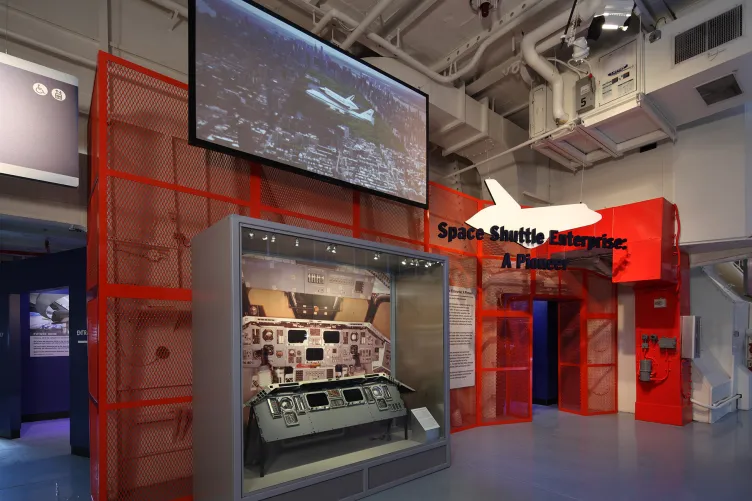
Enterprise played a critical role in the development of the space shuttle program. The exhibition celebrated the pilots and engineers who contributed to the Enterprise story as well as the technological innovations that helped to make Enterprise an icon of the space program.
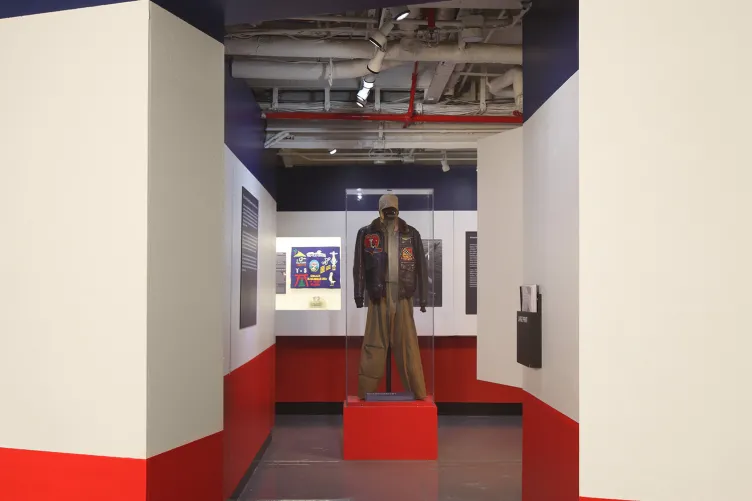
This exhibition highlighted some of the stories behind artifacts in the Intrepid Museum’s collections. In addition to the objects from Intrepid’s history, the exhibition featured objects associated with other major artifacts at the Intrepid Museum Complex: Growler, Concorde and, the most recent addition, space shuttle Enterprise.
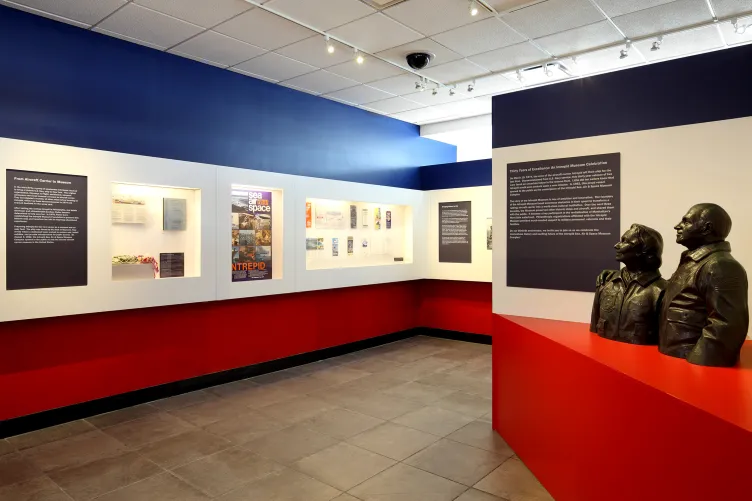
The founders of the Intrepid Museum faced enormous obstacles in their quest to transform a rusting aircraft carrier into a world-class cultural institution. This exhibition traced the dynamic history of the Museum and looked toward its exciting future.

The emergence and the accomplishments of women aviators during this transformational period were examined. Historic uniforms, photographs and film footage brought the stories of these pioneering women to life.
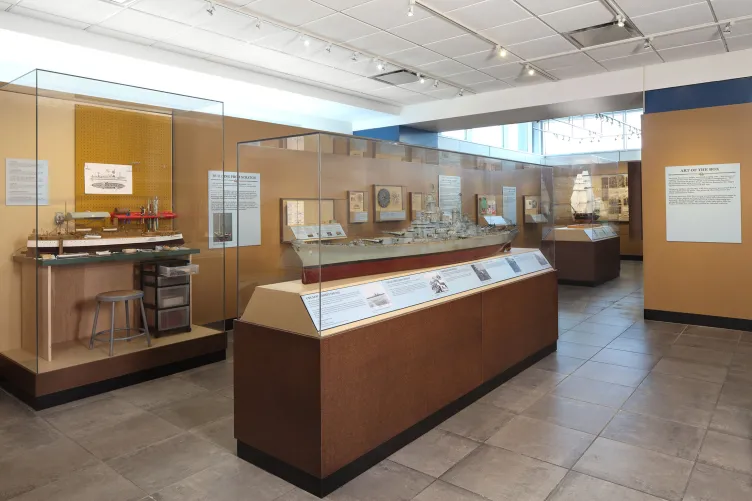
Ever marvel at a model ship and ask, "How did they build that?" Or, perhaps, "Why did they build that?" A fascination with history, technology and the sea has stirred ship model builders for thousands of years. This exhibition explored variations of two famed U.S. Navy ships – the frigate USS Constitution and the battleship USS New Jersey (BB-62) – and offered a peek at the art and craft of ship model building.

This exhibition featured the original artwork of Thomas C. Houtz. Based on historic photographs of U.S. Navy aircraft carriers, twelve illustrations depicted timeless images of storied naval scenes and exploits.

Ever since the invention of the flying machine, pilots have been mindful that this new technology was not without risk. This exhibition explored the development of ejection systems and explained the split-second workings of these life-saving devices. It featured several ejection seats as well as other artifacts related to the survival needs of the aircrewman.
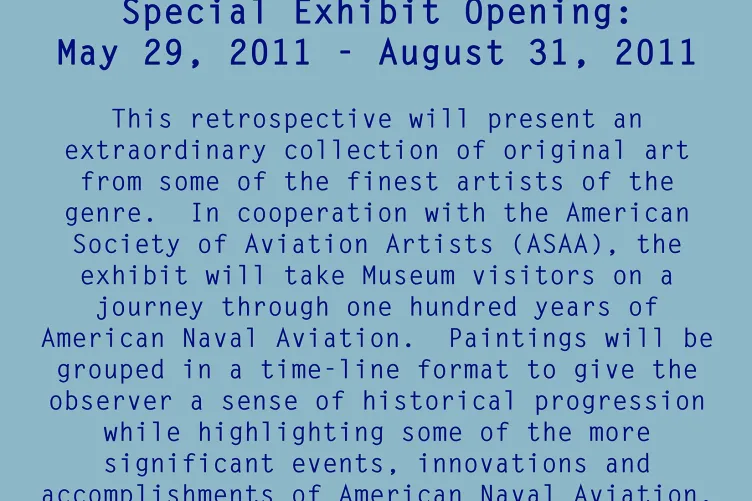
The Intrepid Museum and the American Society of Aviation Artists (ASAA) partnered to celebrate the first 100 years of U.S. naval aviation. The story of the early trials, advancements and accomplishment of U.S. naval aviation from 1911-2011 were told through 24 paintings by ASAA artists.
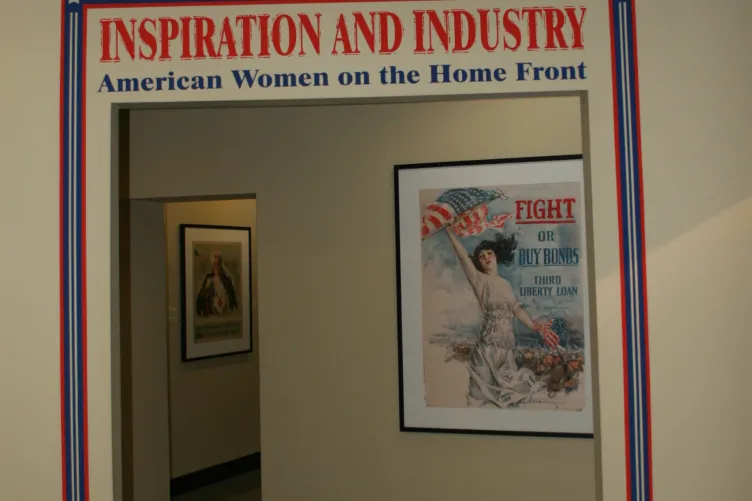
During World War I and World War II, U.S. government posters urged all citizens to make a personal commitment to the war effort. Using more than 20 striking examples from the Museum's collection, the exhibition explored the varied role of women in wartime through their depiction in period posters.
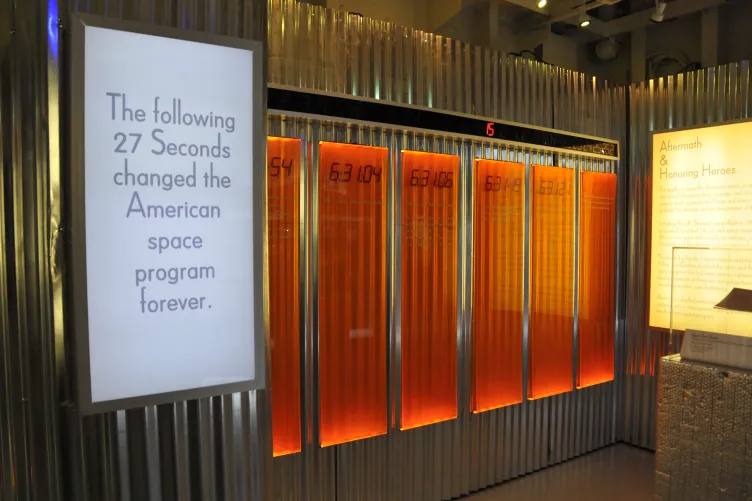
During routine tests, fire engulfed the command capsule and took the lives of astronauts Virgil "Gus" Grissom, Edward White and Roger Chaffee. Through rare photographs, artifacts and narrative, the exhibition explored this tragedy, which riveted a heartbroken nation, set new standards of heroism and service, and changed the course of space exploration in America.
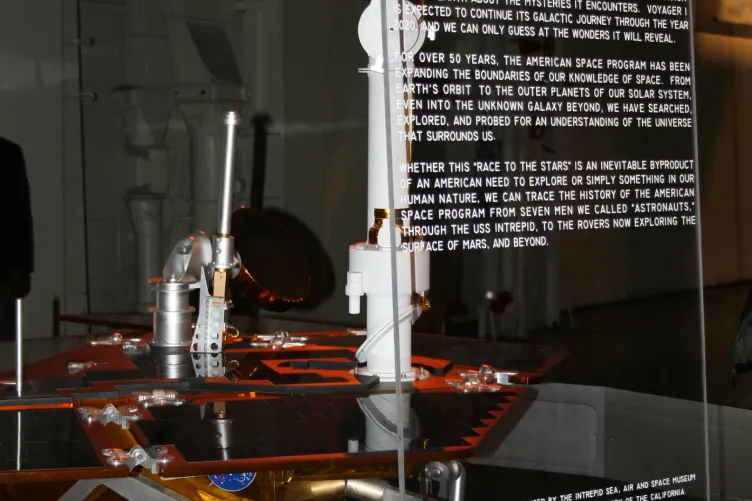
The Intrepid Museum partnered with the Jet Propulsion Laboratory and NASA to present an exhibition featuring a full-scale model of the Mars Rover. This exhibition also addressed the role of USS Intrepid in the American space program.
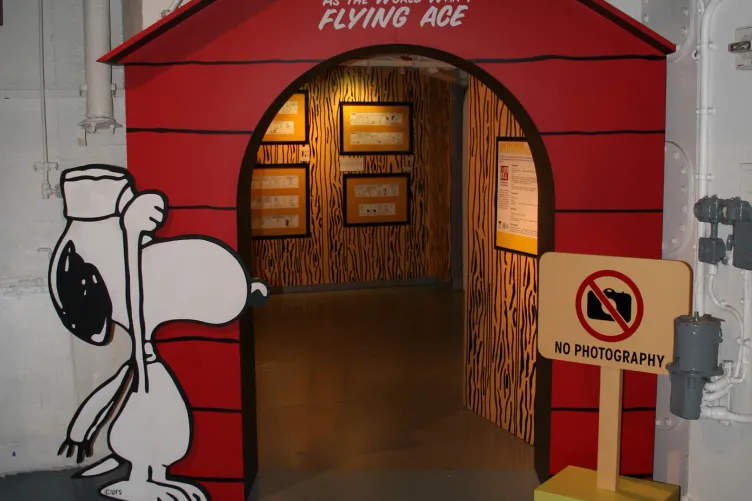
Organized by the Charles M. Schulz Museum, this traveling exhibition featured high-resolution iris prints of Schulz's original cartoons of Snoopy as a World War I ace. While Schulz was drawing scenes of Snoopy as an aviator, Intrepid crew members were creating their own original “sailor art” featuring the Peanuts gang.
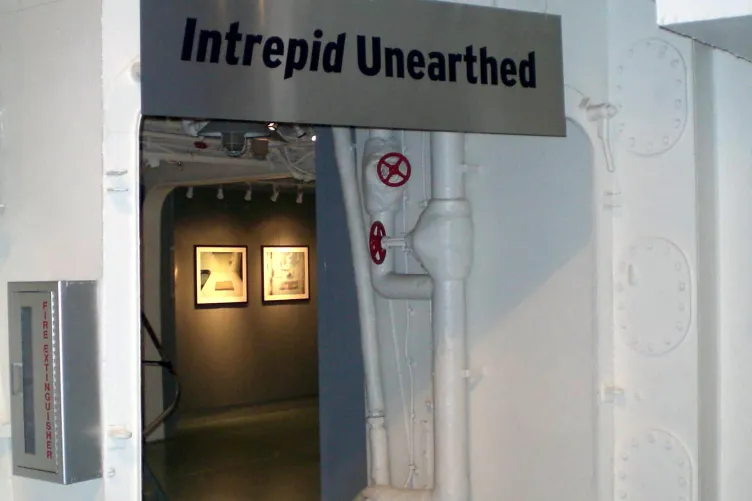
Unearthing Intrepid from her home in the Hudson River offered a singular opportunity to uncover the hidden history within the ship. While some of Intrepid's historic spaces have been restored, many other compartments and corridors have remained virtually untouched since the ship's decommissioning in 1974. The Intrepid Museum commissioned five early- to mid-career architectural photographers from New York to interpret the ship's unrenovated spaces.

EarthCam, a leader in advanced webcam technology, partnered with the Intrepid Museum to deliver a "pilot's eye" view of Intrepid's historic flight deck. The unique angle from atop the ship's mast has been enjoyed by millions around the world live on the Museum’s website.
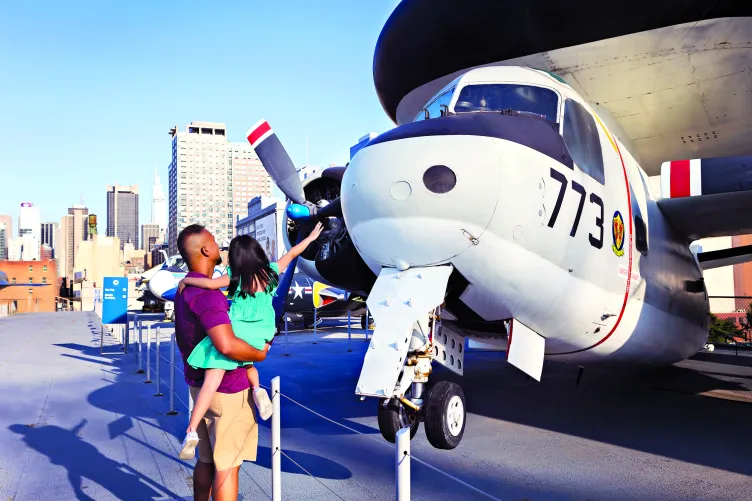
Enjoy exclusive benefits, including free admission. Learn more and join today.


